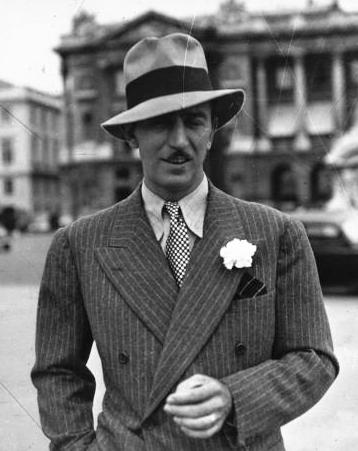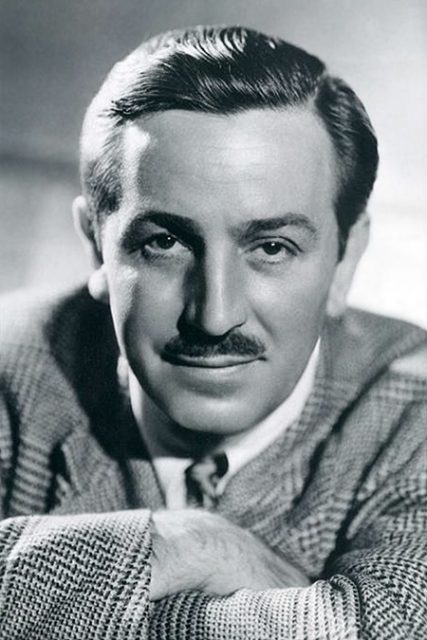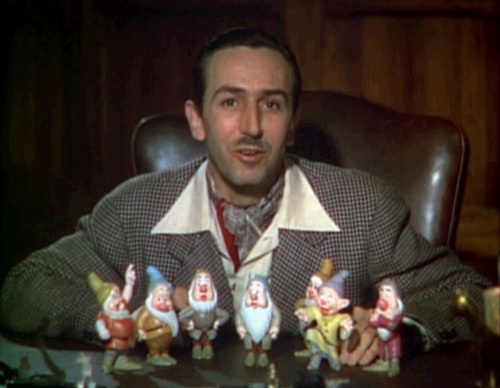
From clever animated films to wildly popular theme parks, Walt Disney is responsible for America’s most enduring cheerful fantasies. But underneath all that bright, happy Technicolor lies a darker truth. The groundbreaking animator was haunted by his seeming responsibility in his own mother’s death.
Born on December 5, 1901, Walter Elias Disney was one of five children born to Elias and Flora Call Disney. He grew up in Chicago and Marceline, Missouri, where early on he showed an aptitude for the cartooning that would make him rich and famous. He drew as a child, took art classes in high school, and contributed cartoons to the high school newspaper. After serving in the Red Cross as an ambulance driver in France for a year, he returned to the United States, drew for newspapers and advertising agencies, and began experimenting with cel animation. His first studio failed, but he bounced back with the help of his brother Roy, and the two moved to Hollywood to launch the Disney Brothers’ Studio. Their animated short Steamboat Willie introduced the world to Mickey Mouse, with Walt as the iconic mouse’s voice.

Walt Disney_1935
Snow White and the Seven Dwarfs marked a turning point for Walt on several levels. It was his first full-length cel-animated feature film. Doubters—including his brother and his wife—thought the effort was crazy. People even called it “Disney’s Folly.” But Snow Whitewas immediately and astonishingly successful. Despite (or perhaps because of) the Depression, the film captured the public’s imagination. The movie took in an unheard-of $1.5 million, and $8 million worldwide. Today it is one of the top 10 blockbusters, adjusted for inflation, in earning $909 million. It was Disney’s biggest hit ever.
Snow White was nominated for an Academy Award for Best Musical Score in 1938. The following year Walt Disney was given an Honorary Award for the movie, which was recognized as a “significant screen innovation which has charmed millions and pioneered a great new entertainment field for the motion picture cartoon.” In a cute move, the Academy gave Disney eight statuettes—one full size and seven minis, to represent, of course, Snow White and her seven dwarfs, on display today at the Walt Disney Family Museum, in San Francisco. (It was his second honorary Oscar—the first was for the creation of Mickey. His total of 26 Academy Awards stands as the record.)

Walt Disney in a 1946 publicity photo
Flush from the critical and financial success of Snow White, Walt and Roy bought their parents a house in North Hollywood, as a 50th wedding anniversary present. Elias and Flora moved from Oregon. When Flora complained about a weird smell coming out of the furnace, Walt had studio repairmen come by to fix it. But apparently they weren’t successful. “The furnace leaked and his mother died,” Don Hahn, the executive producer of such Disney films as Maleficent, The Lion King, and Beauty and the Beast, told Glamour magazine in 2014. “The housekeeper came in the next morning and pulled his mother and father out on the front lawn.” Rushed to the hospital, his father survived, his mother did not. They had lived in the house for less than a month. Flora died November 26, 1938, at age 70.
The death haunted the animator, who had two nervous breakdowns during his lifetime. “He never would talk about it, nobody ever does,” Hahn told Glamour. “He never spoke about that time because he personally felt responsible because he had become so successful that he said, ‘Let me buy you a house.’”

Walt Disney in a Snow white trailer from 1937
Walt took a day off to attend his mother’s funeral, but then he dove right back into work. Many if not most of his subsequent movies featured motherless children, which some theorize was a subconscious reaction to feeling guilty over his mother’s death. Of course, Snow White didn’t have a mother, and the production of that movie preceded Flora’s death. And many of the fairytales that Walt and Roy adapted had absent parents—a kind of story short-hand that sets kids along the coming-of-age path.
Still, the list of motherless children is long, from Cinderella and Sleeping Beauty to Bambi and Pinnochio, and endures to this day, think Nemo and Frozen’s Elsa and Anna. And the subject has even merited academic scrutiny, as Sarah Boxman cited in a 2014 article for the Atlantic: “Rather than presenting any really maternal figure, [authors Ariel Dorfman and Armand Mattelart] say, Disney offers up only ‘the captive and ultimately frivolous woman,’ who lacks any tie to ‘the natural cycle of life itself.’” Perhaps it was his perceived role in his mother’s unnatural death that kept Walt at a distance from maternal figures for the rest of his life.
